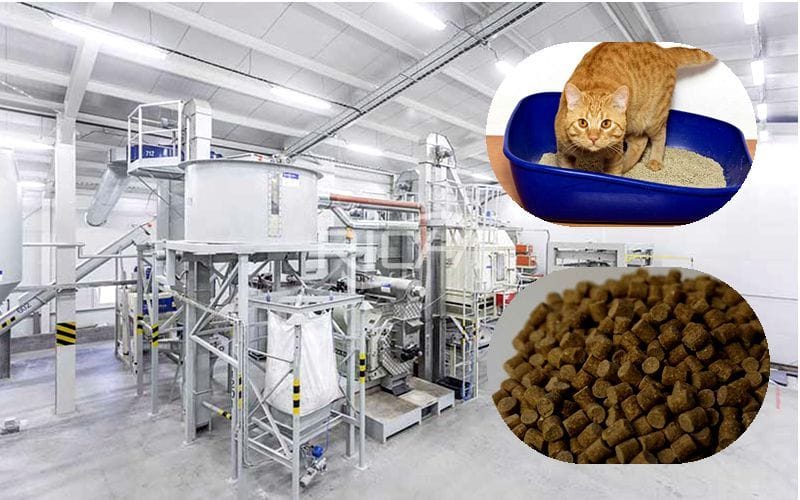
Cat litter is a staple in every cat owner’s home, providing a clean and hygienic space for their feline companions. But how much do we really know about how cat litter is made? From the raw materials to the final product that lands on store shelves, the process of making cat litter involves several key stages. Let’s take a look at the journey of cat litter from the factory floor to your cat’s litter box.
Step 1: Selecting Raw Materials
The production of cat litter begins with the selection of raw materials. Most traditional cat litters are made from bentonite clay, a naturally occurring mineral that has excellent absorbent and clumping properties. However, as consumers increasingly demand eco-friendly options, alternatives such as silica gel, wood pellets, and recycled paper are also becoming more popular. These materials are chosen for their ability to absorb moisture, control odor, and meet environmental needs.
Step 2: Mining and Sourcing
For clay-based litters, the process begins with mining bentonite clay from quarries. The clay is extracted and transported to manufacturing plants, where it undergoes refinement. For eco-friendly litters, alternative materials are sourced from sustainable resources. For example, recycled paper litters come from post-consumer paper waste, and wood pellets are made from sawdust or wood chips, ensuring that these materials have a minimal environmental footprint.
Step 3: Crushing and Grinding
Once the raw materials arrive at the factory, they are ground down into small particles. The size and texture of the granules are important for the litter’s performance. The grinding process ensures that the litter is the right consistency for absorption, clumping, and ease of use. The granules need to be uniform in size to ensure consistent performance when exposed to moisture, whether the litter is clumping or non-clumping.
Step 4: Dust Control
A significant issue in cat litter manufacturing is dust. Excess dust can be harmful to both cats and their owners, causing respiratory irritation. To address this, manufacturers use dust extraction systems that remove fine particles during the production process. These systems help ensure that the final product is low in dust, making it safer for your cat and creating a more pleasant experience for those who handle the litter.
Step 5: Adding Clumping and Odor Control
One of the key features of many cat litters is the ability to form solid clumps when wet. To achieve this, manufacturers add special clumping agents to the mixture. These agents bond the particles together when they come into contact with moisture, ensuring that waste is locked away and can be easily scooped out. In addition to clumping, odor control is also a priority. Various ingredients, such as activated charcoal, baking soda, or natural minerals, are added to neutralize bad odors and keep the litter box smelling fresh. Some litters are also lightly scented to further enhance odor control, while others are unscented for more sensitive cats.
Step 6: Quality Control and Testing
Quality control is a crucial step in the production of cat litter. Each batch of litter is tested for its ability to absorb moisture, form clumps, control odors, and minimize dust. The litter is also tested for its comfort, as it needs to be safe and comfortable for cats to use. Some manufacturers even conduct trials with real cats to see how the litter performs in real-life situations. Only once the litter passes all these tests does it move on to packaging.
Step 7: Packaging the Litter
After passing quality control, the litter is packaged for retail. Packaging serves a critical role in preserving the quality of the litter, preventing spills, and providing convenience for customers. Bags and boxes come in various sizes, from small packages for individual households to larger bulk bags for multi-cat homes. Many packages are designed with resealable tops or easy-to-handle features, making it easier for cat owners to pour and store the litter.
Step 8: Distribution to Retailers
Once packaged, the litter is ready for distribution. It is sent to pet stores, supermarkets, and online retailers, where it is made available to consumers. Depending on the brand and type, cat litter can be found in a variety of locations, making it easy for pet owners to stock up.
The Final Product: A Cleaner, More Comfortable Cat Litter Box
The journey of cat litter from raw material to finished product is a complex process that requires attention to detail at every step. From mining and grinding to dust control and odor management, every stage is carefully planned to ensure that the litter performs effectively and safely for both cats and owners. cat litter factory So, the next time you pour fresh litter into your cat’s box, you can appreciate the science and craftsmanship that went into creating this indispensable household product, keeping your cat comfortable and your home clean.